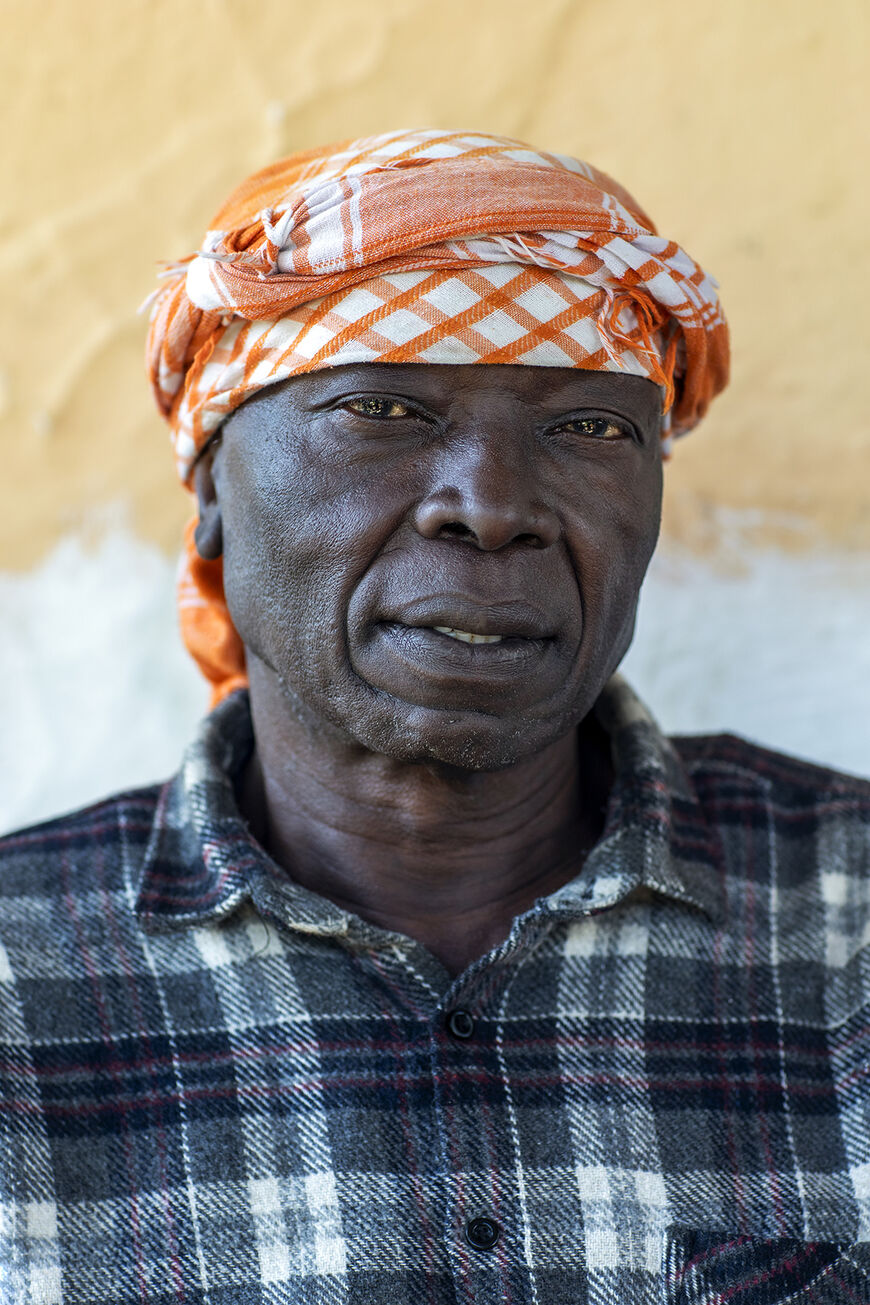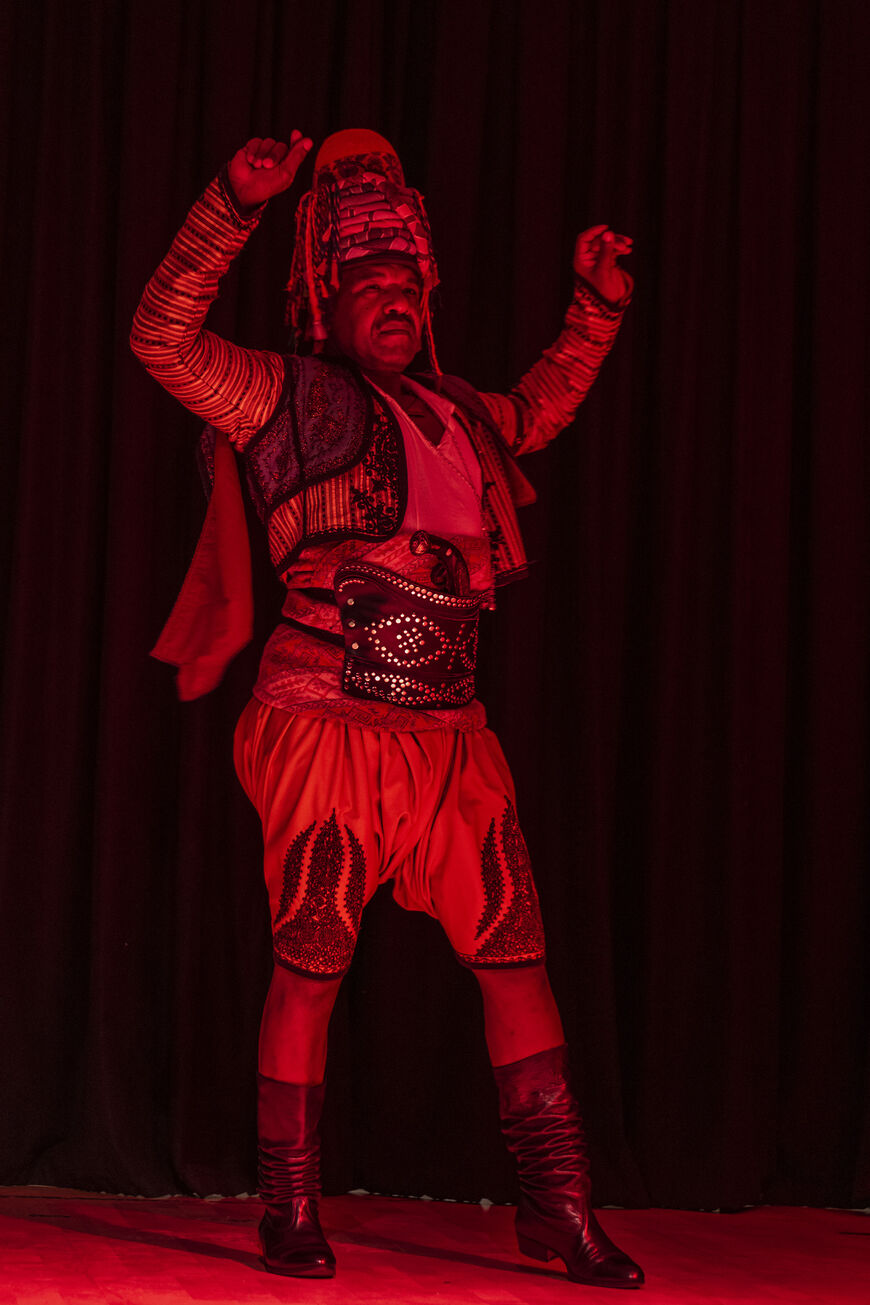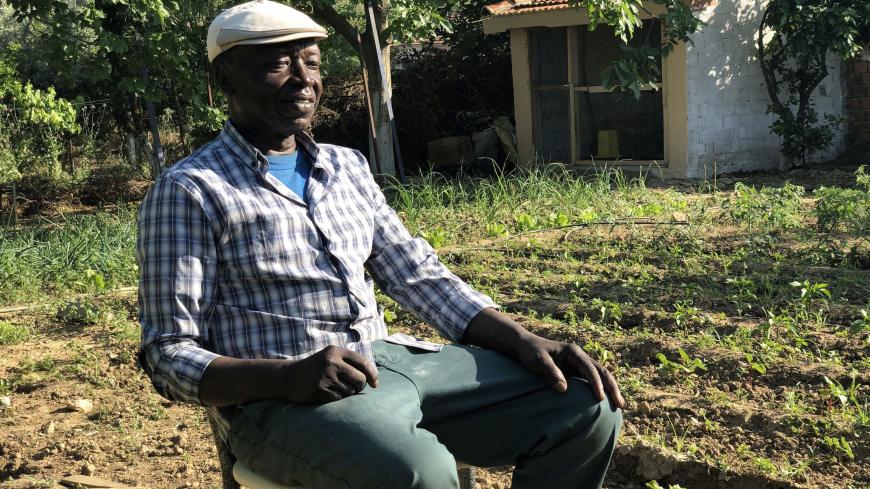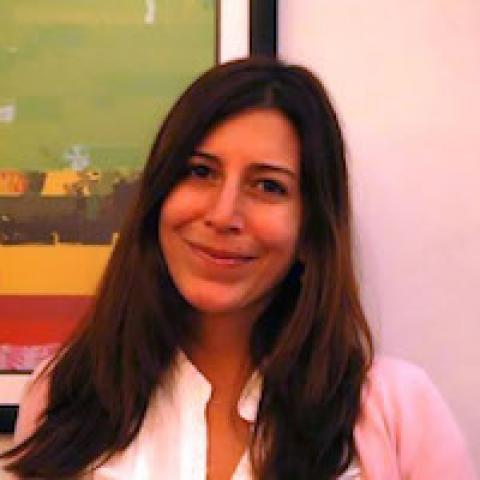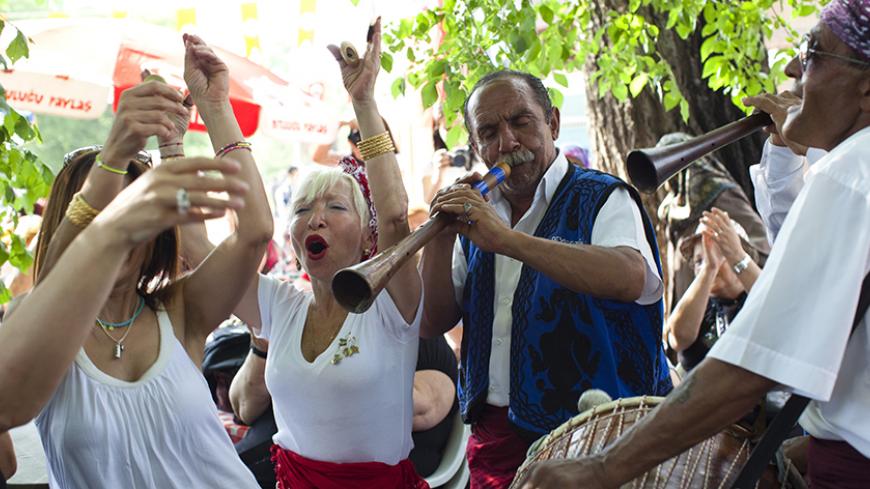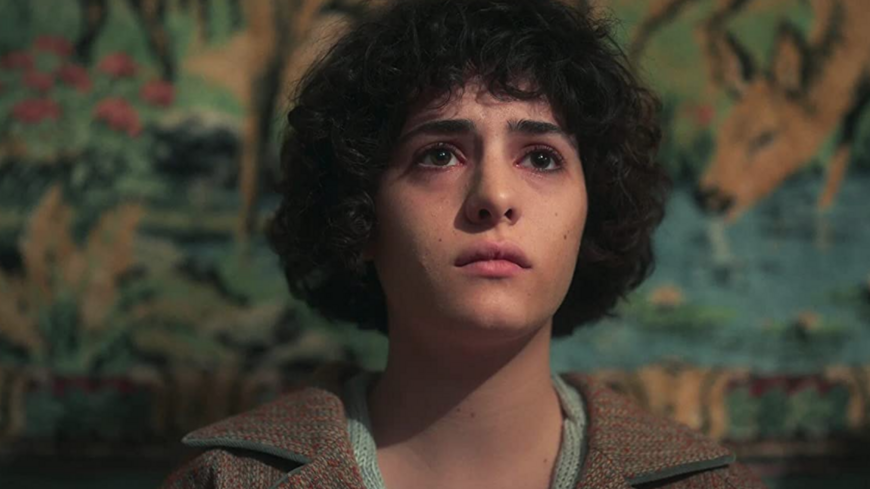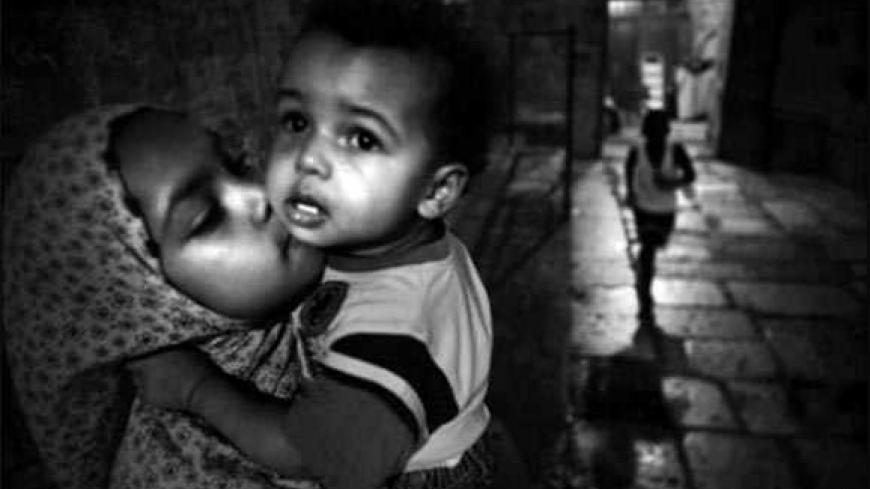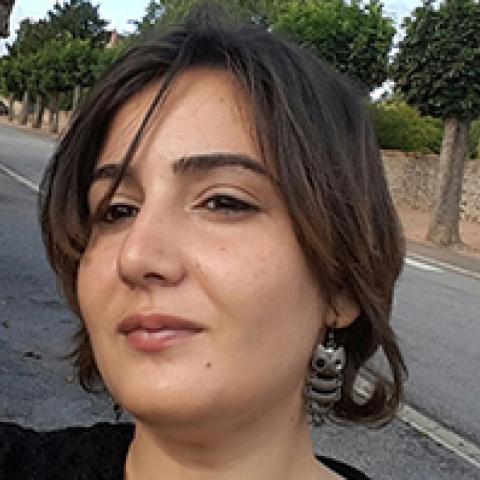Afro-Turks seek visibility in Turkey’s cultural mosaic
Often mistaken for tourists in their own land, Afro-Turks are using ritual, art and oral history to assert their place in Turkey’s story.
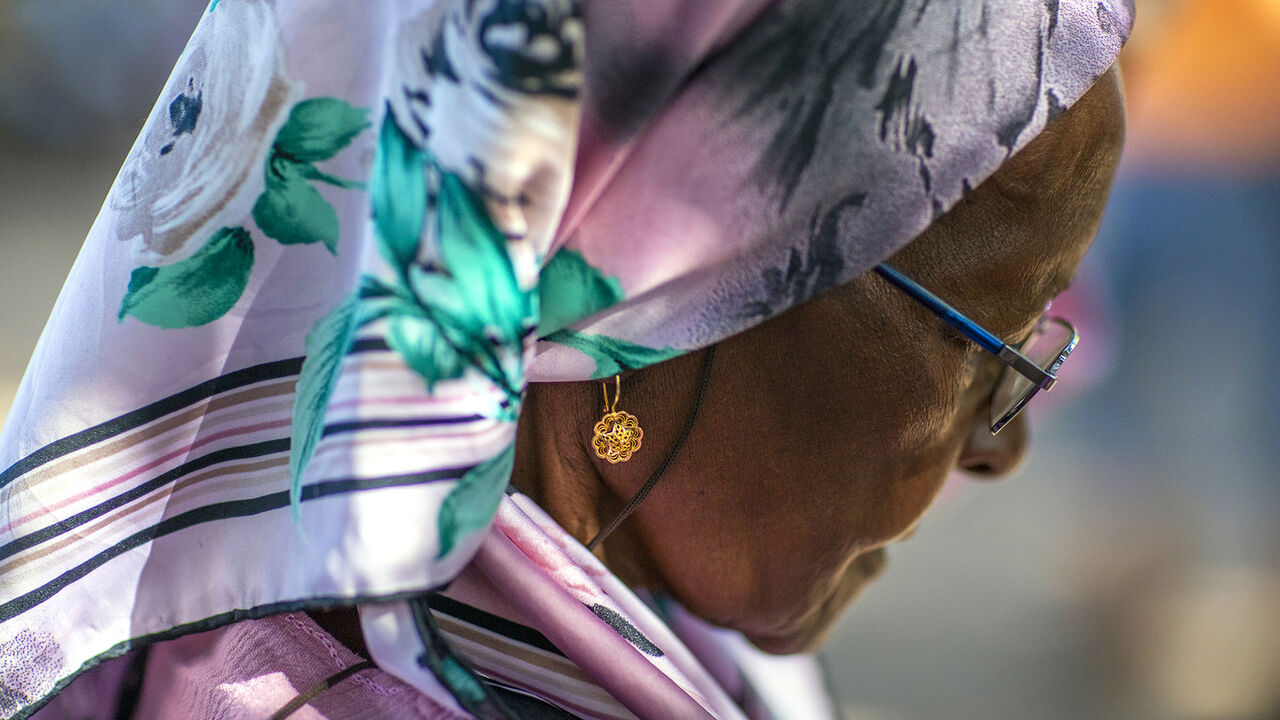
IZMIR — On one of the first warm days in September, members of the tiny Afro-Turk community gathered in the city center of Izmir, in western Turkey. Women in bright printed dresses wore regal headwear over their braided hair. Some of the men donned wooden masks, while young dancers whirled in straw skirts to the beat of drums. The Dana Bayrami, or Calf Festival, is not only an entertaining spectacle, but equally a means of survival, keeping Afro-Turk culture alive as, in the words of community members, their “colors fade” and their numbers shrink.
Afro-Turks are often portrayed as descendants of enslaved Africans brought to the Ottoman Empire as early as the 16th century, but their history is more layered. Among them were free men recruited into the Ottoman military, agrarian workers granted land in the late empire and early republic, and families resettled during the 1923 Turkish-Greek population exchange. Many intermarried with local Turks, further blurring visible distinctions.
Today’s Afro-Turks reject being cast in the singular narrative of slavery or diaspora. They also resist framing their struggle in terms of overt racial politics. Instead, their associations emphasize national belonging and inclusion, not separation.
"The Farm Worker," by Philippe Dupuich, 2025.
"Our story is different from that of African Americans or Afro-Europeans," Orhan Cetinbilek, head of the African Culture, Solidarity and Assistance Association, said at a conference on Afro-Turks in Izmir on Sept. 20. "The Afro-Turks have one language, one country, and one culture. This was first the Ottoman Empire, then the Republic of Turkey. We fought in their wars, including the national War of Independence."
Records indicate that Africans served as eunuchs and soldiers under the Ottomans as early as the 17th century. After the abolition of slavery in 1857, many Afro-Turks worked in agriculture or in service of the state, mostly in the military or the security forces. Some rose to prominence.
Ahmet Ali Celikten (1883–1969), a pilot who lived under late Ottoman and republican rule, is celebrated as one of the world’s first black aviators. The writer and journalist Orhan Kologlu, of Libyan descent, served as Turkey’s cultural attaché in European capitals in the 1960s and later as head of the Press and Information Directorate during the 1970s.
Still, visibility and acknowledgment as Afro-Turks remains a struggle. Members of the community are often mistaken for African migrants or tourists.
"I walked with Orhan [Cetinbilek] once through Kadifekale," the French photographer Philippe Dupuich told Al-Monitor. "Schoolchildren called out to him in English. When he replied in Turkish that he was Turkish like them, they were stunned. It was a moment that showed me how little this story is known, even in the Aegean region, where most of them live. Imagine the rest of the country."
Heritage and memory
Dupuich has spent the past three years documenting the Afro-Turk community. "Afro-Turk Spirit," his exhibition currently at the French Cultural Center in Izmir, is one of the most ambitious efforts yet to capture their little-known history. Shot in the Izmir neighborhoods of Basmane, Hasköy, Kadifekale, and others, his portraits and scenes from these communities focus on homes, public squares and rituals, including the Calf Festival.
For Dupuich, the project is less about documentation and more about testimony and respect. Having lived on the island of Réunion, he has long been interested in post-slavery societies.
“What they now need is a larger project where old people in the community tell their story, so their stories will not be lost with them,” Dupuich said. “And the time to do it is now, while they still can.”
"The Aegean Dancer," by Philip Depuich, 2025.
Much of the effort to revive the history of Afro-Turks stems from the late Mustafa Olpak, who in 2006 founded the Afro-Turk Association in Ayvalik, later relocated to Izmir. His memoir, “Kenya-Crete-Istanbul: Human Biographies from the Slave Coast,” was later adapted as a TRT documentary, marking one of the first acknowledgments of Afro-Turkish history on national television.
In 2007 Olpak pushed for reviving the almost lost tradition of the Calf Festival, which may have been held in some villages, but lacked centralized organization. The municipality of Izmir now supports it. When Olpak died in 2016, he also left a legacy carried on through oral history projects like the EU-financed “Voices from a Silent Past,” which recorded the memories of 100 Afro-Turks.
A resilient community
No one knows exactly how many Afro-Turks there are.
“We never reflect on numbers,” Beyhan Turkkollu, a community leader, told Al-Monitor. “We are numerous in the Aegean and Thrace, and there are some in Karaman, Konya and the Black Sea region. Some of them are brown-skinned and some are completely white.” With a chuckle, she added, “Our colors fade as we intermix.”
Turkkollu's own family reflects this mixing of heritages. Her maternal ancestors were brought to Macedonia in the mid-19th century and later resettled in Izmir during the Turkish-Greek population exchange. Her paternal line includes African, Arab and Yoruk Turkish ancestors.
“In my family you can see every shade, from the darkest black to the fairest with blond hair and green eyes,” Turkkollu told Al-Monitor.
Afro-Turks with dark skin have reported being called "slave" or "Arab," being stopped by police questioning their identity or being mocked in school. Some say they avoid large crowds, where they feel they are being watched. Many prefer to remain in small Aegean towns, working as farmers or artisans, rather than to live in big cities, where prejudices can be harsher.
Ferit Gokcen, a 75-year-old retired minibus driver, said he was called "Blackie." "As a young man, I was big, tall, very dark and had a mop of black curly hair,” he told Al-Monitor. "But I was very strong, so they would not be able to call me names [then]. As I age, you mellow. Now my nickname is Arab Remzi, and I do not mind at all."
Gokcen pointed to the woman next to him, 67-year-old Murvet Guney. She has pale skin, and a black headscarf covers her white hair. “Look, she is totally white-skinned. I have two children. One is dark-skinned like me, the other is a pale-skinned.”
Reclaiming the narrative
For decades, Afro-Turks were absent from politics. In 2018, two Afro-Turk men ran for parliament, one from the People's Democratic Party (HDP) and another from the Good Party. Although neither won, their candidacies broke a long silence.
Afro-Turks have also appeared on stage and screen — for example, the singer Esmeray, the dancer Melis Sokmen, and the footballer Hadi Turkmen — but they are often viewed through stereotypes or in the background. Today, community leaders want a narrative written on their own terms — as living citizens, heirs of varied pasts, and representatives of another color in Turkey’s mosaic.

